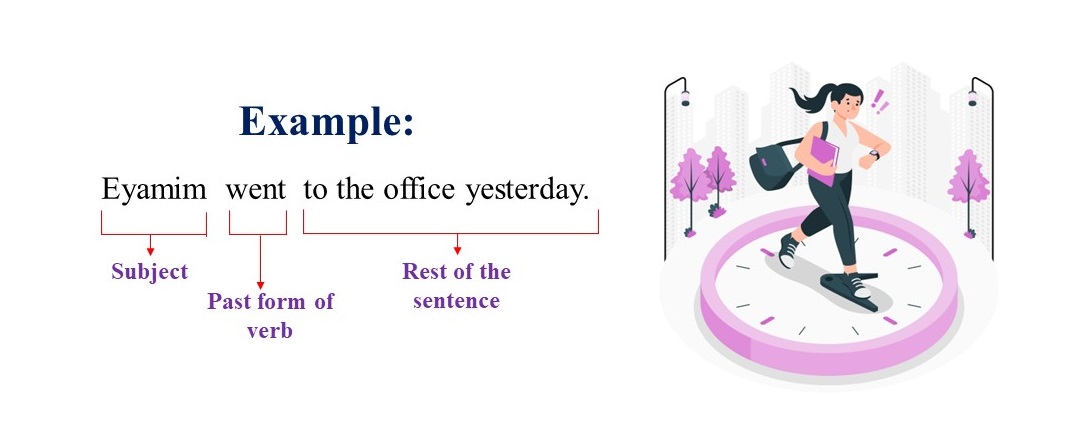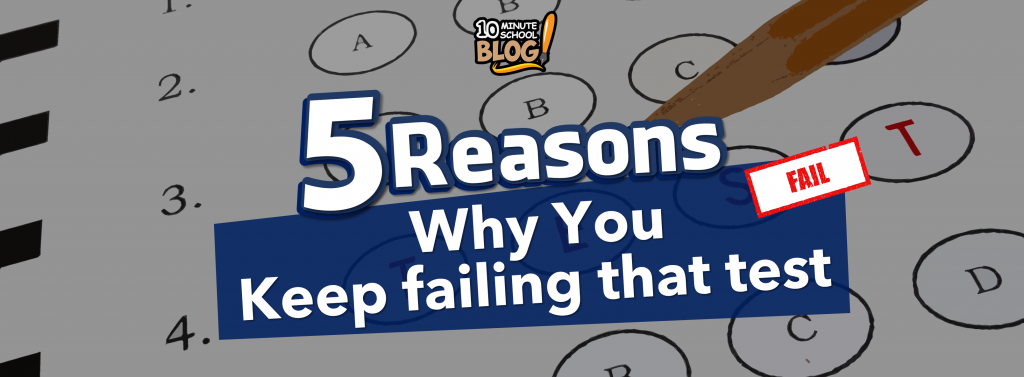If I ask you to name one topic of English grammar that you fear the most, what will you answer? Most of you will answer tense, right? Tense is one of the most important topics to learn in the English language. From school life to college life, everywhere we need the rules of tense. In this blog, you will learn everything about tense. This blog is written with classifications, structures, usage, and examples to remove the fear of tense and make it simpler for you!
What is Tense?
The concept of tense in English is a method that we use to refer to time—past, present, and future. According to the Cambridge Dictionary, Tense is any of the forms of a verb that show the time at which an action happened.
Why are tenses important to learn?
In the English language, tenses are considered the most important and integral part of speech. Without tenses, every sentence is illogical. To frame a sentence and convey the information clearly, we need to learn the correct use of tenses in a sentence. Tenses help us to communicate effectively and express the context of the information.
What are the types of tenses?
Mainly, there are 3 types of tenses. They are present tense, past tense, and future tense.
| Type | Definition | Example |
| Present Tense | a tense expressing an action that is currently going on or habitually performed, or a state that currently or generally exists. | I go to college
I am writing a blog I like to watch TV |
| Past Tense | a tense expressing an action that has happened or a state that previously existed. | I went to college
I was writing a blog I did the homework |
| Future Tense | a tense expressing an action that has not yet happened or a state that does not yet exist. | Mouri will do the work by tomorrow
They will finish the work by six o’clock |
However, for each of the past, present, and future tenses, four different aspects add additional details. The given chart shows all 12 types of tenses:
|
Type |
Classification |
| Present |
Present Indefinite |
|
Present Continuous |
|
|
Present Perfect |
|
|
Present Perfect Continuous |
|
|
Past |
Past Indefinite |
|
Past Continous |
|
|
Past Perfect |
|
|
Past Perfect Continuous |
|
| Future |
Future Indefinite |
|
Future Continous |
|
|
Future Perfect |
|
|
Future Perfect Continuous |
So, now you know the definition of tense and the classifications. Let’s talk about each of the tenses individually!
Present Tense
Present tense is a verb form used to describe actions, events, or situations that are happening right now or are generally true. In the present tense, we use the root level of English verbs.
There are 4 types of present tense.
Present Simple Tense
The present simple tense, also known as the Present Indefinite Tense, is used to express actions, habits, facts, or situations that are generally true and do not necessarily have a specific connection to the present moment.
Example:
- I go to the gym every day.
- Anoy practices the piano every day.
Here, the sentences refer to an action that happens every day or is a regular occurrence. Hence, this is called the simple present tense.
We also use the present simple tense for referring to universal truths.
For example, The earth moves around the sun.
| Structure of the Present Indefinite Tense | ||
| Type | Structure | Examples |
| Positive | Subject + Base Verb (Infinitive) + rest of the sentence | Every morning, John walks his dog in the park. |
| Negative | Subject + do/does + not + Base verb + rest of the sentence | They do not like spicy food. |
| Interrogative | Do/Does + Subject + Base Verb + rest of the sentence +[?] | Do you play the guitar? |
| Negative Interrogative | Do/Does + Subject + Not + Base Verb + Rest of the sentence + [?] | Doesn’t he speak French? |
Example: Mira wakes up at 6 a.m. and walks her dog before work. She often visits the local restaurant for breakfast.
ঘরে বসে English Grammar
কোর্সটিতে যা যা পাচ্ছেন:
Present Continuous Tense
Present continuous tense is used for referring to a task that is happening now, frequently, and may continue into the future.
Example: Anoy is practicing the piano.
For forming the present continuous tense, follow the structure:
Subject + am/is/are + present participle (verb + ing) + the rest of the sentence
Example: In Bangladesh, it is raining heavily, and people are rushing to take cover. Meanwhile, Sarah is standing at the bus stop, getting drenched as she waits for her bus.
| Structures of the Present Continuous Tense | ||
| Type | Structure | Examples |
| Positive | Subject + am/is/are + present participle (verb+ing) + the rest of the sentence | Examples:
I am playing football |
| Negative | Subject + am/is/are + not + present participle (verb + ing) + the rest of the sentence | Examples:
I am not playing football |
| Interrogative | Am/is/are + subject + present participle (verb+ing) + the rest of the sentence + [?] | Examples:
Am I Playing football? |
| Negative Interrogative | Isn’t/aren’t + subject + present participle (verb+ing) + the rest of the sentence
(Or) Am/is/are + subject + not + present participle (verb + ing) + the rest of the sentence + [?] |
Examples:
Am I not playing football? |
Present Perfect Tense
We use present perfect tense for something that started in the past and continues in the present or when we are talking about our experience up to the present.
Example: She has just finished her assignment.
The present perfect is formed from the present tense of the verb have/has [depends on the subject] and the past participle of a verb.
Structure:
Subject + have/has + verb (past participle/3rd form of a verb) + rest of the sentence.
Example: He has completed his master’s degree in physics, and now he is looking for a job. They have visited many famous landmarks during their travels around the world.
| Structure of the Present Perfect Tense | ||
| Type | Structure | Examples |
| Positive | Subject + have/has + past participle + rest of the sentence | He has finished his work. |
| Negative | Subject + have/has + not + past participle + rest of the sentence | They have not visited Paris. |
| Interrogative | Have/Has + Subject + past participle + rest of the sentence + [?] | Have you seen this movie? |
| Negative Interrogative | Have/Has + Subject + not + past participle + rest of the sentence + [?] | Hasn’t she eaten the lunch yet? |
Present Perfect Continuous Tense
The present continuous tense denotes actions/events that are already in progress while we speak about them.
Example: I have not been working on this project for a week.
The present perfect is formed from the present tense of the verb have/has [depends on the subject] and the past participle of a verb.
Structure:
Subject + have/has + been + present participle (verb+ing) + the rest of the sentence
| Structure of the Present Perfect Continuous Tense | ||
| Type | Structure | Examples |
| Positive | Subject + have/has been + present participle + rest of the sentence | She has been dancing for hours. |
| Negative | Subject + have/has not been + present participle + rest of the sentence | We have not been waiting long. |
| Interrogative | Have/Has + Subject + been + present participle + rest of the sentence + [?] | Have they been working here long? |
| Negative Interrogative | Have/Has + Subject + not been + present participle + rest of the sentence + [?] | Hasn’t he been playing guitar all day? |
Past Tense
The past tense is a tense used for a past activity or a past state of being. We also use the past tense when we talk about any hypothesis.

Nevertheless, the past tense is further divided into 4 types based on whether the action was ongoing or had already been concluded.
Past Simple Tense/Past Indefinite Tense
The simple past or past indefinite is a verb tense that is used to talk about things that happened or existed before now.
Structure:
Sub + Past form of a verb + rest of the sentence
Example: Last summer, we visited Paris and explored the Eiffel Tower and the Louvre Museum. He finished his book last night and felt a great sense of accomplishment
| Structure of the Past Simple Tense | ||
| Type | Structure | Examples |
| Positive | Subject + Past form of the verb (Infinitive)+ rest of the sentence | We visited London last summer. |
| Negative | Subject + did + not + Base Verb+ rest of the sentence | I did not go to the party. |
| Interrogative | Did + Subject + Base Verb+ rest of the sentence + [?] | Did she like the gift? |
| Negative Interrogative | Did + Subject + not + Base Verb + rest of the sentence + [?] | Did they not finish their homework? |

Past Continuous Tense
The past continuous tense shows a continuous action that began in the past. It is used in a sentence to represent an action or event that was going on in the past.
| Structure of the Past Continuous Tense | ||
| Type | Structure | Examples |
| Positive | Subject + was/were + base form of verb + ing + rest of the sentence | They were playing inside. |
| Negative | Subject + was/were + not + base form of verb + ing + rest of the sentence | I was not sleeping during the lecture. |
| Interrogative | Was/Were + Subject + base form of verb + ing + rest of the sentence + [?] | Were you reading a book yesterday? |
| Negative Interrogative | Was/were + subject + not + base form of verb + ing + rest of the sentence + [?] | Were they not swimming in the pool? |
Example: While Sarah was doing her homework, the rain was falling outside, creating a soothing sound. The kids were playing in the garden when suddenly, a rainbow appeared in the sky.
Past Perfect Tense
The past perfect tense is used to demonstrate an action that was happening in the past for a period of time in a particular context. The context can be a specific time or another action.
| Structure of the Past Perfect Tense | ||
| Type | Structure | Examples |
| Positive | Subject + had + past participle of verb + rest of the sentence | I had visited that city before. |
| Negative | Subject + had + not + past participle of verb + rest of the sentence | I had not visited that city before. |
| Interrogative | Had + subject + past participle of verb + rest of the sentence + [?] | Had I visited that city before? |
| Negative Interrogative | Had + subject + not + past participle of verb + rest of the sentence + [?] | Had I not visited that city before? |
Example: Before going to the party, Mouri had finished his homework. When we arrived at the cinema, the movie had started.
Past Perfect Continuous Tense
Past perfect continuous tense is used for refer to an action that started in the past, continued in the past, and also ended at a certain point in the past
| Structure of the Past Perfect Continuous Tense | ||
| Type | Structure | Examples |
| Positive | Subject + had been + present participle of verb + rest of the sentence | They had been practicing for a long time. |
| Negative | Subject + had not been +present participle of verb + rest of the sentence | They had not been practicing for a long time. |
| Interrogative | Had + subject + been +present participle of verb + rest of the sentence + [?] | Had they been practicing for a long time? |
| Negative Interrogative | Had + subject + not been + present participle of verb + rest of the sentence + [?] | Had they not been practicing for a long time? |
Example:
- She had been practicing the piano for hours before the concert.
- By the time we reached the beach, the sun had been shining brightly.
ঘরে বসে Spoken English
কোর্সটি করে যা শিখবেন:
Future Tense
The future tense is the “form of a verb that you use when you are talking about something that will happen or exist in the future.” We use the future tense to refer to the future.
The future tense can be used in 4 different forms.
Future Simple Tense
The simple future is a verb tense that’s used to talk about things that haven’t happened yet. It is used to indicate events of the future time.
Structure:
Subject + will + Base Verb (Infinitive) + rest of the sentence
Example: I will play football with my friends at the park tomorrow. In the evening, she will watch her favorite TV show after finishing her homework.
| Structure of the Future Simple Tense | ||
| Type | Structure | Examples |
| Positive | Subject + will + Base Verb (Infinitive) + rest of the sentence | I will call you tomorrow. |
| Negative | Subject + will + not + Base Verb + rest of the sentence | She will not visit next week. |
| Interrogative | Will + Subject + Base Verb + rest of the sentence + [?] | Will they arrive on time? |
| Negative Interrogative | Will + Subject + not + Base Verb + rest of the sentence + [?] | Will he not come to the party? |
Future Continuous Tense
The future continuous tense is used to refer to the action that will happen in the future and continue for an expected period.
Structure:
Subject + will be + present participle + rest of the sentence
Example:
- Next week, they will be working on a science project for the school exhibition.
- As the clock strikes twelve on New Year’s Eve, people will be cheering and counting down to welcome the new year.
| Structure of the Future Continuous Tense | ||
| Type | Structure | Examples |
| Positive | Subject + will be + present participle + rest of the sentence | This time tomorrow, they will be working. |
| Negative | Subject + will not be + present participle + rest of the sentence | I will not be working late tonight. |
| Interrogative | Will + subject + be + present participle + rest of the sentence + [?] | Will you be attending the conference? |
| Negative Interrogative | Will + subject + not be + present participle + rest of the sentence + [?] | Will they not be watching a movie? |
Future Perfect Tense
The future perfect tense is used to talk about something that will be completed before a specific time in the future.
We can use phrases like by or by the time (meaning at some point before) and in or in a day / in two months / in five years’ etc. (meaning at the end of this period) to indicate the period in which the action will be completed.
Structure:
Subject + will have + past participle + rest of the sentence
Example:
- By the time the weekend arrives, I will have completed all my homework assignments.
- When you return from your holiday, the builders will have finished renovating your house.
| Structure of the Future Perfect Tense | ||
| Type | Structure | Examples |
| Positive | Subject + will have + past participle + rest of the sentence | By the end of the year, he will have finished the project. |
| Negative | Subject + will not have + past participle + rest of the sentence | They will not have completed the course. |
| Interrogative | Will + subject + have + past participle rest of the sentence + [?] | Will she have written the report by Friday? |
| Negative Interrogative | Will + subject + not have + past participle + rest of the sentence + [?] | Will they not have reached their destination? |
Future Perfect Continuous Tense
The future perfect continuous refers to a tense that describes actions that will continue up until a point in the future.
Structure:
Subject + will have been + present participle + rest of the sentence
Example:
- When summer ends, I will have been practicing the guitar for six months, hoping to play a song for my friends.
- By the time we meet again, the flowers in the garden will have been blooming for a whole year.
| Structure of the Future Perfect Continuous Tense | ||
| Type | Structure | Examples |
| Positive | Subject + will have been + present participle + rest of the sentence | In a year, they will have been renovating their house for a decade. |
| Negative | Subject + will not have been + present participle + rest of the sentence | He will not have been studying for long. |
| Interrogative | Will + subject + have been + present participle + rest of the sentence + [?] | Will you have been working here for a year? |
| Negative Interrogative | Will + subject + not have been + present participle + rest of the sentence + [?] | Will they not have been painting the room? |
All Types of Tense: At a Glance
|
Type |
Classification |
Structure |
| Present Tense | Present Indefinite | Subject + Base Verb (Infinitive) |
| Present Continous | Subject + am/is/are + present participle | |
| Present Perfect | Subject + have/has + past participle | |
| Present Perfect Continuous | Subject + have/has been + present participle | |
| Past Tense | Past Indefinite | Subject + Past Tense of Verb |
| Past Continous | Subject + was/were + present participle | |
| Past Perfect | Subject + had + past participle | |
| Past Perfect Continuous | Subject + had been + present participle | |
| Future Tense | Future Indefinite | Subject + will + Base Verb (Infinitive) |
| Future Continous | Subject + will be + present participle | |
| Future Perfect | Subject + will have + past participle | |
| Futuret Perfect Continuous | Subject + will have been + present participle |
Frequently Asked Questions
-
What is tense?
Tense is any of the forms of a verb that show the time at which an action happened.
-
What are the types of tenses?
Mainly, there are three types of tense. They are-
- Present
- Past
- Future
-
What is the definition of present tense?
Present tense is a verb form used to describe actions, events, or situations that are happening right now or are generally true.
-
What is the definition of past tense?
The past tense is a tense used for a past activity or a past state of being. We also use past tense when we talk about any hypothesis.
-
What is the definition of future tense?
The future tense is the form of a verb that you use when you are talking about something that will happen or exist in the future.
-
What are the 12 forms of tense?
12 Forms of tenses are-
- Present Indefinite
- Present Continuous
- Present Perfect
- Present Perfect Continuous
- Past Indefinite
- Past Continuous
- Past Perfect
- Past Perfect Continuous
- Future Indefinite
- Future Continuous
- Future Perfect
- Future Perfect Continuous
English-এর ফ্রি ক্লাসে জয়েন করতে ক্লিক করুন এই লিঙ্কে: Book Your Free Class @ 10MS English Centre, Uttara
- English For Everyday
- Idioms and Phrases
- Academic English Grammar
- English Grammar Fundamentals
- Study Abroad Complete Guideline
- Pronunciation Mistakes
- Grammar Foundation Course
আমাদের কোর্সগুলোতে ভর্তি হতে ক্লিক করুন:
Visit 10 Minute School’s website www.10minuteschool.com







আপনার কমেন্ট লিখুন